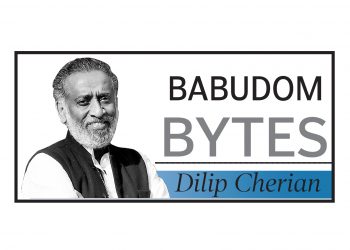The recent security lapse at the Parliament has highlighted the inherent risks associated with prolonged vacancies in critical positions, emphasizing the urgent need for a reevaluation of our approach to national security. This most significant breach since the 2001 terror attack, has prompted a reassessment of key affairs, particularly the management of personnel at the highest echelons. One glaring issue lies in the extended absence of a full-time joint secretary to head the Parliament Security Service. Currently filled by Brijesh Singh, a director-level officer, the Executive Director (Security) position at the Parliament has been vacant for too long. In the aftermath of the security breach, there was a presumption among officers across services that the Executive Director (Security) would be promptly replaced. However, it was discovered that the vacancy had persisted since mid-November, following the departure of Raghubir Lal, a 1997-batch IPS offer to Uttar Pradesh as ADG (Security) after completing an extended one-year tenure. Further, the incident has woken up the government to the precarious situation of key central armed police forces like the CRPF and CISF, which have been operating under ad hoc arrangements for months. Notably, the post of CRPF Director General has been ad hoc managed by ITBP DG Anish Dayal Singh since the beginning of this month, replacing Dr Sujoy Lal Thaosen. Similarly, the DG CISF post has been filled by IPS officer Neena Singh in an ad hoc arrangement, since the retirement of Sheel Vardhan Singh in August. Prolonged vacancies in such critical roles pose a direct threat to national security and demand swift action.
New Rajasthan CM hits the ground running
In a notable display of urgency, newly appointed Rajasthan Chief Minister Bhajan Lal Sharma wasted no time in making his mark on the administration. Even as he is consulting the Centre on the composition of his cabinet, within hours of assuming office he announced the selection of three seasoned IAS officers for crucial roles in the Chief Minister’s Office (CMO). Though it is pointed out that this is a temporary arrangement, T. Ravikanth was appointed as the Principal Secretary to the Chief Minister, succeeding Kuldeep Ranka who served ex-chief minister Ashok Gehlot. Adding further depth to Sharma’s team, Ms Anandhi, an IAS officer of the 2007 batch, assumed the role of Secretary to the CM, while Dr Saumya Jha of the 2017 batch joined as Joint Secretary to the CM, to inject fresh perspectives and youthful dynamism. Such prompt actions, observers note, not only set the tone for Sharma’s leadership but also underscore the urgency with which he aims to address key issues facing Rajasthan, as much as his desire to distance his government from the previous Congress government under Gehlot. Still, these are early days of the administration and among Sharma’s tasks will also be to show that despite his rookie status within the BJP, he has what it takes to do a good job.
UP Chief Secy’s next move remains a mystery
With the appointment of three new faces as chief ministers in Madhya Pradesh, Rajasthan and Chhattisgarh, the Modi sarkar, once again, revealed its penchant for unpredictability. The attention has now shifted to the intensifying politicking in Uttar Pradesh, where some punters are predicting a similar upheaval. However, among UP babu circles the big question is whether Chief Secretary Durga Shanker Mishra will get another extension of service. Mishra’s trajectory follows a unique and unprecedented path. Originally the Union Secretary for Urban Affairs, he became chief secretary of Uttar Pradesh in December 2021. A growing consensus suggests that Mishra’s tenure may extend beyond this month, marking his third successive extension. But, unlike previous extensions, this one might be limited to six months. If Mishra indeed secures another extension, sources claim that political rivals are expected to resort to legal challenges, as seen recently in similar cases like that of ED chief SK Mishra and Delhi Chief Secretary Naresh Kumar. However, the Centre has successfully navigated such challenges in the past. Another school of thought suggests that after December 31, Mishra may wade into politics and potentially contest the 2024 Lok Sabha elections from UP. This however seems like a remote possibility given the Centre’s likely reluctance to release him before achieving its Mission 2024. Mishra is unlikely to defy the decisions of the Centre.
